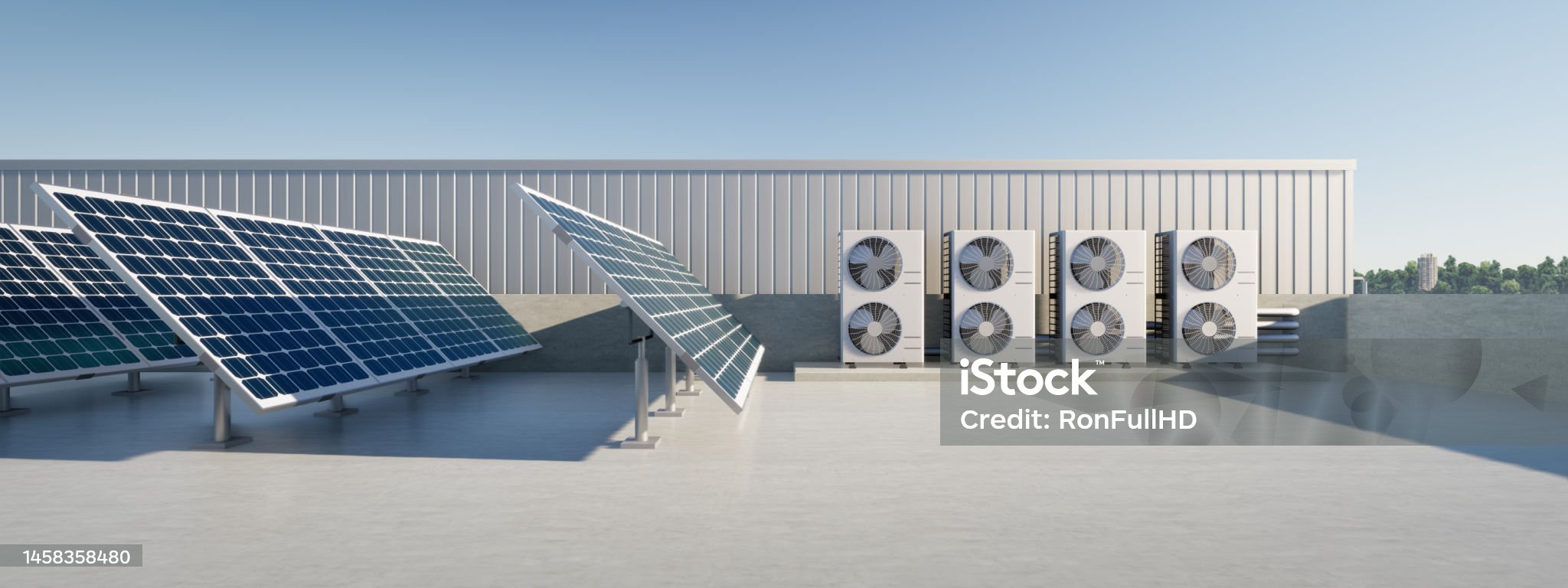Introduction to Solar-Powered Fans
In today’s world, where energy conservation is a priority, solar-powered devices are becoming increasingly popular. A solar-powered fan is one such invention that combines efficiency, eco-friendliness, and convenience. This simple device uses solar energy to operate, making it an excellent choice for cooling solutions in homes, offices, and outdoor spaces.
What Is a Solar-Powered Fan?
A solar-powered fan is a type of fan that runs on electricity generated from sunlight. Unlike traditional fans that use electricity from the power grid, these fans use solar panels to convert sunlight into electrical energy. This energy powers the fan, allowing it to circulate air and keep you cool without relying on conventional electricity sources.
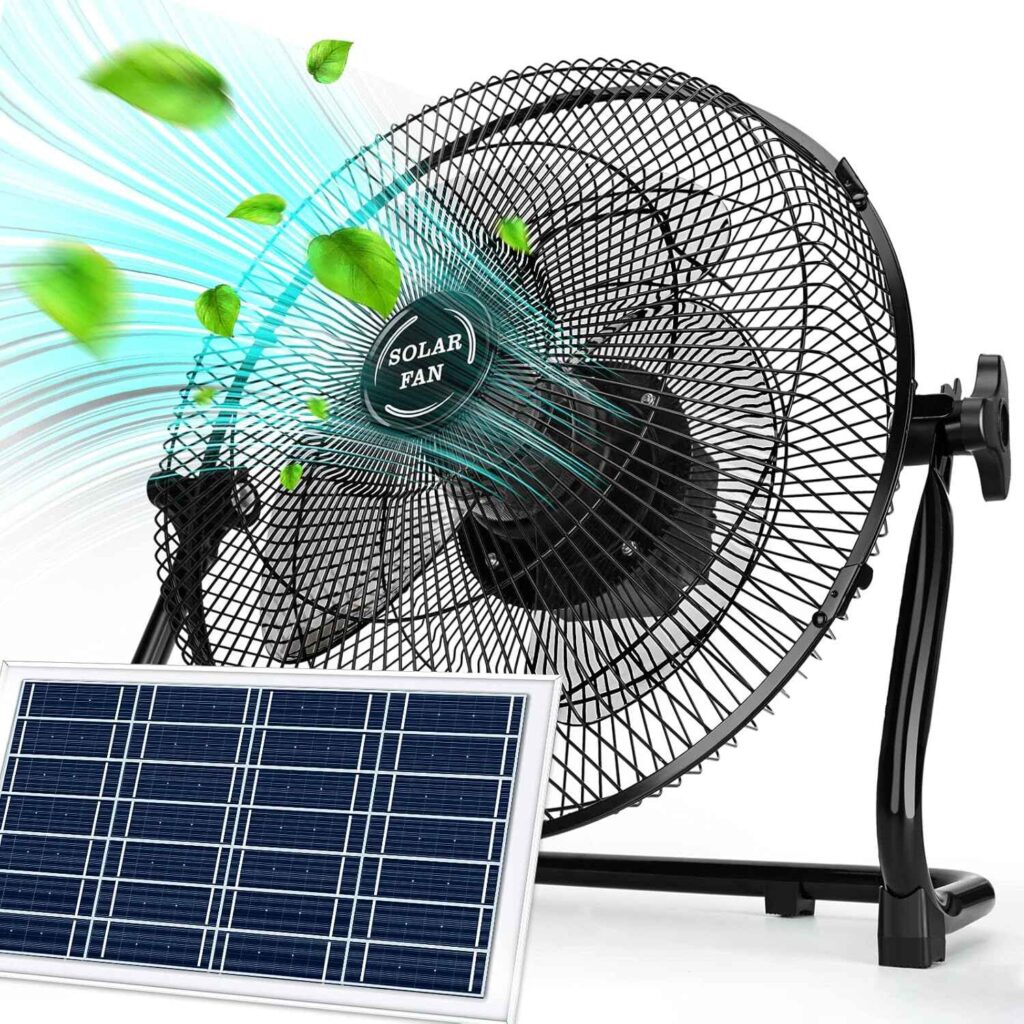
Why Solar-Powered Fans Are Important
The importance of solar-powered fans lies in their ability to address several challenges at once:
Energy Efficiency: Solar-powered fans use a renewable energy source—sunlight. This reduces dependency on fossil fuels, which are not only limited but also harmful to the environment.
Cost Savings: Once installed, solar-powered fans operate without adding to your electricity bill. This can lead to significant cost savings over time.
Eco-Friendly Cooling: Since they do not rely on electricity from power plants, which often burn coal or gas, solar fans help reduce greenhouse gas emissions.
Power During Outages: Solar fans continue to work during power outages, making them an excellent choice for areas with unreliable electricity.
Ideal for Remote Locations: These fans are especially useful in places where conventional electricity is unavailable or expensive, such as rural areas or remote locations.
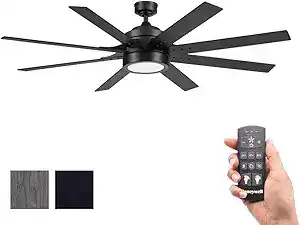
How Does a Solar-Powered Fan Work?
The working principle of a solar-powered fan is quite simple. It primarily consists of two main components: a solar panel and a fan motor.
Solar Panel: This is the component that collects sunlight and converts it into electricity. Solar panels are usually made of photovoltaic (PV) cells, which use sunlight to generate an electric current.
Fan Motor: The electricity generated by the solar panel powers the fan motor, causing the fan blades to rotate and circulate air.
Some advanced solar-powered fans also include batteries to store excess energy. These batteries allow the fan to operate even when there’s no sunlight, such as during the night or on cloudy days.
Types of Solar-Powered Fans
Solar-powered fans come in various types, designed to suit different needs and environments:
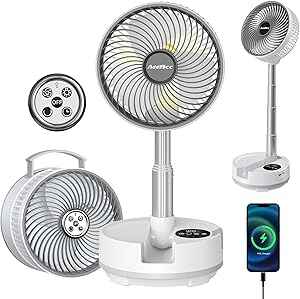
Standalone Solar Fans: These fans are independent devices with a built-in solar panel. They are portable and can be placed anywhere with access to sunlight.
Solar Attic Fans: These fans are installed in the attic of a house. They help ventilate the attic space, reducing heat buildup and improving overall home cooling.
Hybrid Solar Fans: These fans can run on both solar power and electricity from the grid. This makes them versatile and reliable, even when sunlight is insufficient.
Solar-Powered Exhaust Fans: Designed for removing stale air from indoor spaces, these fans are commonly used in bathrooms, kitchens, and workshops.
Solar-Powered Ceiling Fans: These are larger fans used for indoor cooling. They are ideal for homes or offices and often come with a battery backup.
Advantages of Using Solar-Powered Fans
Using a solar-powered fan offers numerous benefits:
Eco-Friendly: Solar fans do not emit greenhouse gases or other pollutants, making them an environmentally friendly choice.
Low Operating Cost: After the initial investment, these fans have almost no operating costs since they rely on free solar energy.
Durable and Long-Lasting: Solar panels are designed to withstand harsh weather conditions, making them a durable option for outdoor and indoor use.
Portable Options: Many solar fans are lightweight and portable, allowing you to use them wherever needed.
Reduced Heat in Homes: Solar attic fans can significantly reduce the heat buildup in your home, lowering the need for air conditioning.
Energy Independence: By using a solar-powered fan, you reduce your reliance on the grid, contributing to energy independence.
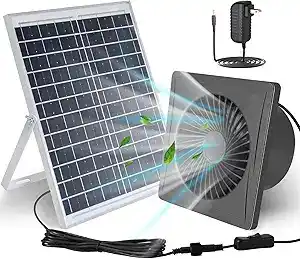
Challenges of Solar-Powered Fans
Despite their many advantages, solar-powered fans have a few challenges:
Upfront Cost: The initial cost of purchasing and installing a solar-powered fan can be higher than traditional fans.
Dependence on Sunlight: Solar fans perform best in areas with abundant sunlight. In places with frequent cloudy weather, their performance may be limited unless they have a battery backup.
Limited Power Output: Solar-powered fans may not be as powerful as high-performance electric fans, making them more suitable for moderate cooling needs.
Battery Maintenance: If the fan includes a battery, it may require periodic maintenance or replacement over time.
Applications of Solar-Powered Fans
Solar-powered fans have diverse applications in different settings:
Homes and Offices: These fans provide efficient cooling without adding to electricity bills.
Outdoor Spaces: Portable solar fans are perfect for patios, gardens, and camping trips.
Agriculture: Farmers use solar-powered fans in greenhouses to maintain optimal temperatures for plants.
Industrial Use: Factories and workshops use solar exhaust fans to remove heat and stale air.
Transportation: Solar fans are used in vehicles, especially in trucks and RVs, to maintain airflow without draining the battery.
Conclusion: The Future of Solar-Powered Fans
Solar-powered fans are a smart, sustainable solution for cooling. As technology advances, these fans are becoming more efficient and affordable, making them accessible to a wider audience. By investing in solar-powered fans, individuals and businesses can contribute to a greener future while enjoying cost-effective cooling. In the next section, we will delve deeper into the technical aspects, installation process, and tips for choosing the right solar-powered fan for your needs.
How to Choose, Install, and Use Solar-Powered Fans
In the first part, we learned what solar-powered fans are and why they’re beneficial. In this second part, we will explore how to choose the right solar-powered fan, how to install it, and how to maintain and maximize its efficiency. By understanding these aspects, you can make the most of your solar-powered fan and enjoy its full potential.
How to Choose the Right Solar-Powered Fan
Choosing the best solar-powered fan for your needs can be easy if you know what to look for. Here are some key factors to consider:
Purpose of the Fan
Indoor Use: If you’re looking for a fan for your home or office, consider a solar-powered ceiling fan or a table fan. These fans are designed to provide efficient cooling indoors.
Outdoor Use: For outdoor activities like camping, gardening, or sitting on the patio, portable solar-powered fans are the best choice. They are lightweight and easy to move around.
Attic Ventilation: Solar attic fans are ideal if you want to reduce heat buildup in your attic, which can help lower your air conditioning costs.
Size of the Area
Choose a fan based on the size of the area you want to cool. Larger spaces may require a fan with higher airflow capacity, measured in cubic feet per minute (CFM). For example:
Small rooms or tents: Fans with 200-500 CFM.
Large rooms or attics: Fans with 1,000 CFM or more.
Type of Solar Panel
Built-In Solar Panels: These are integrated into the fan and are suitable for portability.
Separate Solar Panels: These are connected to the fan via a wire, allowing you to place the panel in the best sunlight while keeping the fan indoors or in a shaded area.
Battery Backup
If you need the fan to work at night or during cloudy days, look for one with a built-in battery backup. This ensures uninterrupted operation even when sunlight is unavailable.
Durability
If you plan to use the fan outdoors, ensure it’s made of durable materials that can withstand harsh weather conditions. Look for features like weather-resistant housing and rust-proof components.
Price and Budget
Solar-powered fans come in various price ranges. While higher-priced models often have more features and better quality, you can find budget-friendly options that meet basic needs. Consider the long-term savings on electricity bills when evaluating the cost.
How to Install a Solar-Powered Fan
Installing a solar-powered fan is relatively simple, but it varies depending on the type of fan. Here’s a general guide:
Portable Fans
For portable solar fans, installation is straightforward. Position the fan in the desired location and place the solar panel where it can receive direct sunlight. Ensure there’s no obstruction like trees or buildings blocking the sunlight.
Ceiling Fans
Installing a solar-powered ceiling fan may require professional assistance. Follow these steps:
Mount the fan securely on the ceiling.
Connect the solar panel to the fan using the provided wiring.
Place the solar panel on the roof or another location with maximum sunlight exposure.
Attic Fans
Solar attic fans are mounted on the roof. Here’s how:
Mark the installation spot on the roof, usually near the attic’s hottest point.
Cut an opening for the fan using proper tools.
Secure the fan over the opening.
Attach the solar panel to the fan and position it to capture sunlight effectively.
Exhaust Fans
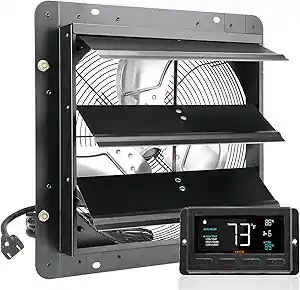
Solar exhaust fans are commonly used in bathrooms or kitchens. To install:
Place the fan in the designated vent area.
Connect the fan to its solar panel.
Install the panel outside where it receives ample sunlight.
Maintenance of Solar-Powered Fans
Maintaining your solar-powered fan ensures its longevity and efficiency. Follow these tips:
Clean the Solar Panel
Dust and dirt can block sunlight from reaching the panel. Clean the panel with a soft cloth and mild water solution every few months to maintain efficiency.
Inspect the Wiring
Check the wiring connections between the fan and the solar panel. Ensure there are no loose or damaged wires, as these can affect performance.
Monitor the Battery
If your fan has a battery backup, inspect it regularly for signs of wear. Rechargeable batteries may need replacement after a few years.
Check for Obstructions
Ensure there are no obstacles, such as overgrown trees or leaves, blocking sunlight from reaching the solar panel.
Lubricate the Fan Motor
If the fan starts making noise or runs less smoothly, apply a small amount of lubricant to the motor or moving parts.
Maximizing the Efficiency of Solar-Powered Fans
Here are some tips to get the best performance from your solar-powered fan:
Position the Solar Panel Correctly
Place the solar panel in a location where it receives direct sunlight for most of the day. The angle of the panel should align with the sun’s position for maximum energy absorption.
Use During Peak Sunlight Hours
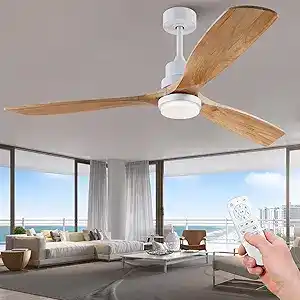
Solar-powered fans work best during peak sunlight hours, usually between 10 a.m. and 4 p.m. Try to use the fan during these times for optimal cooling.
Combine with Other Cooling Methods
For indoor spaces, use the fan in combination with curtains or blinds to block direct sunlight. This helps reduce the overall temperature.
Store Properly When Not in Use
If you’re using a portable fan, store it indoors during off-seasons or extreme weather to protect it from damage.
Advantages of Solar-Powered Attic Fans
Among the various types of solar-powered fans, attic fans have unique benefits:
Improved Air Circulation
Attic fans expel hot air and bring in cooler air, reducing the overall temperature in your attic.
Energy Savings
By cooling the attic, these fans reduce the load on your air conditioning system, lowering energy consumption.
Moisture Control
Proper ventilation prevents moisture buildup, reducing the risk of mold and mildew.
Prolonged Roof Life
Excessive heat can damage roofing materials over time. Solar attic fans help maintain a consistent temperature, extending your roof’s lifespan.
Real-Life Examples of Solar-Powered Fan Usage
Solar-powered fans are used worldwide in various applications. Here are a few examples:
Residential Cooling
In hot climates, homeowners install solar attic fans to keep their homes cooler without overloading air conditioners.
Camping and Outdoor Activities
Campers use portable solar fans to stay comfortable in tents, especially during summer trips.
Agriculture
Farmers install solar exhaust fans in greenhouses to maintain the right temperature and humidity levels for their crops.
Emergency Situations
In areas prone to power outages, solar fans provide a reliable cooling solution, especially during heatwaves.
The Future of Solar-Powered Fans
The demand for solar-powered fans is expected to grow as more people adopt sustainable lifestyles. Advancements in solar technology, such as more efficient panels and longer-lasting batteries, will make these fans even more effective and affordable. Additionally, governments worldwide are promoting renewable energy solutions, which could lead to subsidies or incentives for purchasing solar-powered devices.
Conclusion
Solar-powered fans are a fantastic example of how renewable energy can improve our daily lives. From reducing electricity bills to minimizing environmental impact, these fans offer a practical and sustainable cooling solution. Whether you’re looking for a portable fan for outdoor adventures or an attic fan to lower your home’s temperature, solar-powered options are worth considering. By following the tips outlined in this guide, you can choose, install, and maintain your solar-powered fan effectively, ensuring years of reliable and eco-friendly cooling.
